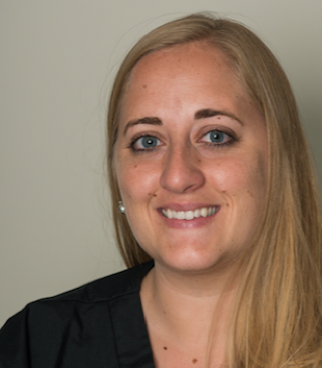To my fellow colleagues – violence is and will remain a health care issue. Alarmingly, an average of 40 percent of women involved in sex trafficking are identified as American Indian and Alaska Native. The unfortunate health consequences for those engaged in sex trafficking include rape, unwanted pregnancy, contracting sexually transmitted infections, depression, anxiety, being physically assaulted, suicidal ideations, and becoming victims of homicide. Homicide is the third highest cause of death for Native girls aged 15 to 19 and women aged 20 to 24. In some communities, American Indian and Alaska Native women face murder rates more than 10 times the national average. Sharing these statistics creates a commonplace mentality that does not truly honor every victim, family, or community impacted by violence and oppression.
Individuals who experience victimization, such as sexual assault, domestic and intimate partner violence, stalking, human trafficking, and other situations could potentially become victims of homicide. With human trafficking being at the core of the Missing and Murdered Indigenous People crisis, we are seeing thousands of patients come through our facility doors however, the majority of eligible patients do not receive a safety screening (see the IHS GPRA Report Summary for 2023.) Failing to screen patients leads to missed opportunities to properly treat, diagnose, and offer culturally appropriate resources. Screening patients, providing education, and offering appropriate resources can lead to healthier patient outcomes, such as support and empowerment to raise their physical, mental, social, and spiritual health and well-being.
As providers, let’s be proactive! Obtain the training needed to enhance the quality of care that we provide to individuals impacted by violence. Develop health care policies that provide care for patients following sexual assault, sexual abuse, domestic and intimate partner violence, physical violence, or trafficking situations. Create a warm, welcoming, non-judgmental, trauma-informed atmosphere during every patient encounter. Actively conduct safety screening for every eligible patient using a validated, evidence-based screening tool for domestic and intimate partner violence (e.g., HARK, HITS, E-HITS, PVS) and human trafficking. Offer every patient holistic, patient-inclusive, culturally appropriate safety planning and education that meets every individual’s needs. Ask the patient how can I/we best support you and your needs at this time? Support and respect the patient’s wishes to control their own care, such as their desire to coordinate with traditional healers. Engage with a coordinated community response and multidisciplinary team and connect with one of the 20 tribal sexual assault/domestic violence coalitions. Lastly, please reach out to the MMIP Regional Coordinators. We are stronger through connections, and we are stronger in community!
Each year, May 5 is recognized as Missing or Murdered Indigenous Persons Awareness Day. We ask that you please wear red to show your ongoing support and dedication, to help honor victims, and to raise awareness and call for an end to this crisis.
Helpful Resources:
- White House – A Proclamation on Missing or Murdered Indigenous Persons Awareness Day, 2023
- The White House (2021) - Executive Order on Improving Public Safety and Criminal Justice for Native Americans and Addressing the Crisis of Missing or Murdered Indigenous People.
- Administration for Native Americans, an Office of the Administration for Children & Families
- Priorities - MMIP related information and MMIP Action Plan
- Keeping Us Whole: Preventing Missing and Murdered Indigenous People – podcast series
- Stay Updated with ANA’s Quarterly MMIP Newsletter
- Not One More – Findings & Recommendations of the Not Invisible Act Commission Report
- Department of the Interior – Indian Affairs – Missing and Murdered Indigenous People
- Department of Justice – Missing or Murdered Indigenous Persons
- Department of Justice – Tribal Community Response Plans, Guide to Developing a Tribal Community Response Plan for Missing Person Cases
- Reauthorization of the Violence Against Women Act, 2022 – contains advancements and reinforces Tribal sovereignty, ensuring Tribes’ hold authority to address violence within tribal lands and communities.
For providers:
- Administration for Children & Families, Office on Trafficking in Persons. Toolkit and Guide: Adult Human Trafficking Screening.
- Administration for Children & Families. SOAR online training modules, which include SOAR for Indigenous Communities, SOAR for SANEs, Culturally and Linguistically Appropriate Services, etc.
- The National Human Trafficking Hotline – Report Trafficking (advocates are available 24/7 to take reports of potential human trafficking.
- Futures Without Violence – Evidence-Based Intervention to Address DV/SV in Health Settings - CUES Framework guide
- IHS Strategic Initiatives – Sexually Transmitted Infections
- Are you or someone you know interested in becoming trained as a sexual assault examiner/forensic examiner? Through the Forensic Nursing Consultant Program contract, Texas A&M University Center of Excellence in Forensic Nursing is offering forensic health care related training and courses for our IHS, tribal, and urban Indian organization providers (courses such as forensic examiner training, clinical skills labs, and more. CEs/CMEs are available).
- Visit their website to register for courses: Continuing Education and Professional Development (tamu.edu)
- Nurses United Against Human Trafficking – is offering 9 CEs/CMEs of human trafficking training and is free to all IHS, tribal, and urban Indian organization providers. Reach out to Nicole.Stahlmann@ihs.gov if you are interested in registering for this course.
- Forensic Healthcare | Indian Health Service (IHS)
- Forensic Health Care and Caring for American Indian and Alaska Native Patients and Medical Forensic Considerations guidebooks are available for download.
- Contact Us, Stay Connected and the IHS Forensic Health Listserv – Sign Up | LISTSERV Email Groups (ihs.gov)



